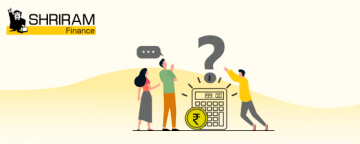If you are paying high interest rates on your current loans and your financial situation has improved, refinancing can help reduce your interest costs and increase your monthly cash flow.
However, like any major financial decision, refinancing existing debt requires careful evaluation across many parameters. You need to assess everything from interest rate differentials, processing fees, and tax implications before deciding if swapping your current financing makes prudent sense.
This article will guide you through the valuable inputs to take into consideration when deciding whether to refinance your loan.
What is Loan Refinancing & How Does It Work?
In simple terms, loan refinancing involves taking out a new loan to pay off an existing financing obligation you may have. Some key aspects include:
- Refinancing: The primary consideration is to access better refinance mortgage rates, longer tenure, or both to derive savings over time. If the loan terms are not substantially improved, refinancing is not worthwhile.
- Outstanding Principal: You essentially transfer your current outstanding principal to a new loan provider. The asset you originally financed (house, car, etc.) carries forward as collateral.
- Closing Existing Loan: The repayment from new financing closes out your existing loan, while the new financial institution creates a fresh contract with typically more favourable terms.
- Application Process: For the applicant, the process feels similar to applying for a fresh loan. However, an existing asset serves as collateral versus a new purchase.
Benefits of Loan Refinancing
When strategically used, refinance my loan helps applicants in multiple ways:
1. Access Lower Interest Rates
If your credit profile has strengthened considerably since availing your existing loan, banks or non-banking financial companies (NBFCs) may offer you lower interest rates by refinancing, as you now pose less risk. This directly saves money.
2. Increase Loan Tenure
You can reduce your Equated Monthly Instalments (EMIs) by increasing the loan duration through refinancing. This frees up monthly cash flows for other expenses or investments.
3. Consolidate Multiple Loans
Refinancing lets you to consolidate multiple loans into a single obligation, making it easier to manage repayments with one EMI date and unified statements.
4. Modify Payment Schedule
Loans can be customised to match irregular income flows. For businesses, the payment structure can be realigned via refinancing instead of traditional EMIs.
When is Refinancing Advisable?
Key Aspects of when to consider a loan for refinancing:
1. Interest Rate Differential
To justify refinancing costs, the new loan must offer substantially cheaper rates, typically at least 2% lower than ongoing financing. Anything less may not yield enough long-term savings.
2. Upfront Fees & Charges
Consider one-time processing fees, pre-payment penalties, administrative costs, etc., to ensure they don’t outweigh interest savings.
3. Loan Tenure
Evaluate whether the extended tenure preserves sufficient short-term cash flow to justify refinancing. Assess the amount of liquidity made available.
4. Break-Even Date
Factor all costs, interest savings, fees, etc., to determine the precise timeframe for refinancing to result in positive net savings.
What are the Potential Expenses in Refinancing?
While refinancing leads to eventual savings in interest expenses, you have to incur certain charges upfront to facilitate the transfer of loans. Typical costs include:
- Processing Fees: Loan providers charge an administrative fee for setting up a new loan contract. This fee includes documentation, diligence and manpower costs.
- Pre-Payment Penalties: Your existing bank or NBFC may impose a penalty fee for closing the loan early before the tenure ends. Check your contract terms.
- Taxes: For home loans, tax benefits claimed earlier may need to be accounted for when refinancing leads to a change in ownership of the property.
- Legal & Valuation Fees: Technical assessments regarding collateral may require legal fees and property surveyor charges to be paid.
When consolidating multiple loans, these costs apply individually to each one being refinanced. Compare total costs to the cumulative future savings.
What Loan Types can be Refinanced?
There are some prime candidates where applicants commonly evaluate refinancing:
- Home Loans: When interest rates decline in the market, homeowners can reduce EMIs by refinancing mortgages.
- Auto Loans: Vehicle loan rates also fluctuate over time. Refinancing helps lower EMIs or increase car loan tenure.
- Business Loans: Expensive machinery loans, working capital loans etc. can be swapped for cheaper financing as business growth lowers risk.
- Personal Loans: Even credit card dues and personal loans can be refinanced when your credit score improves sufficiently over time.
What Aspects Determine Refinancing Eligibility & Approval?
When you apply to swap your existing financing for fresh loans, loan providers scrutinise certain aspects before extending approval:
- Credit Score: A high credit score implies lower default risk. Scores above 700 help secure attractive interest rates when refinancing.
- Repayment History: Timely repayments on your current obligations indicate financial discipline and boost bank or NBFC confidence.
- Debt-to-Income: Loan providers prefer a Debt-to-Income ratio of around 40% or lower. Manage personal finances to stay within this threshold.
- Loan-to-Value: For home loans, the ratio of loan amount to property value should not typically exceed 80% for refinancing approval.
- Income Stability: Steady income over the past 2 years reassures lenders about consistent future repayments.
What Supporting Documents Are Needed for Refinancing?
To ensure smooth processing of your refinancing application, below are some of the typical documents which you need to keep handy:
- Existing Loan Documents: Agreements, statements, etc., containing all information on current loans.
- Income Proofs: Tax returns, bank statements, salary slips, etc. to demonstrate healthy earnings.
- Residence/ID Proof: Standard KYC documents needed for any financing - Aadhar card, passport etc.
- Collateral Ownership: Up-to-date property papers, car registration certificate etc., depending on the asset financed.
- Valuation Reports: In some cases, loan providers may request a fresh valuation of collateral by approved professionals.
Collect these beforehand to avoid last-minute delays.
Conclusion
At its core, refinancing means replacing existing loans with fresh financing at better terms. When used prudently, it helps applicants to reduce interest costs, free up near-term cash flows, and consolidate multiple loans. However, refinancing also involves certain fees.
Carefully assess critical aspects like rate differentials, overall costs and time to break even. Refinancing works best when the savings outweigh the costs within a reasonable period. It should be viewed as a long-term investment decision rather than a quick fix.
With the right research and comparison, loan refinancing through trusted institutions like Shriram Finance Limited can put substantial savings within your reach. By evaluating your options mindfully and considering your specific financial situation, you can make informed decisions that support your business’s financial health and growth.
































